Easy Veggie Baby Purée
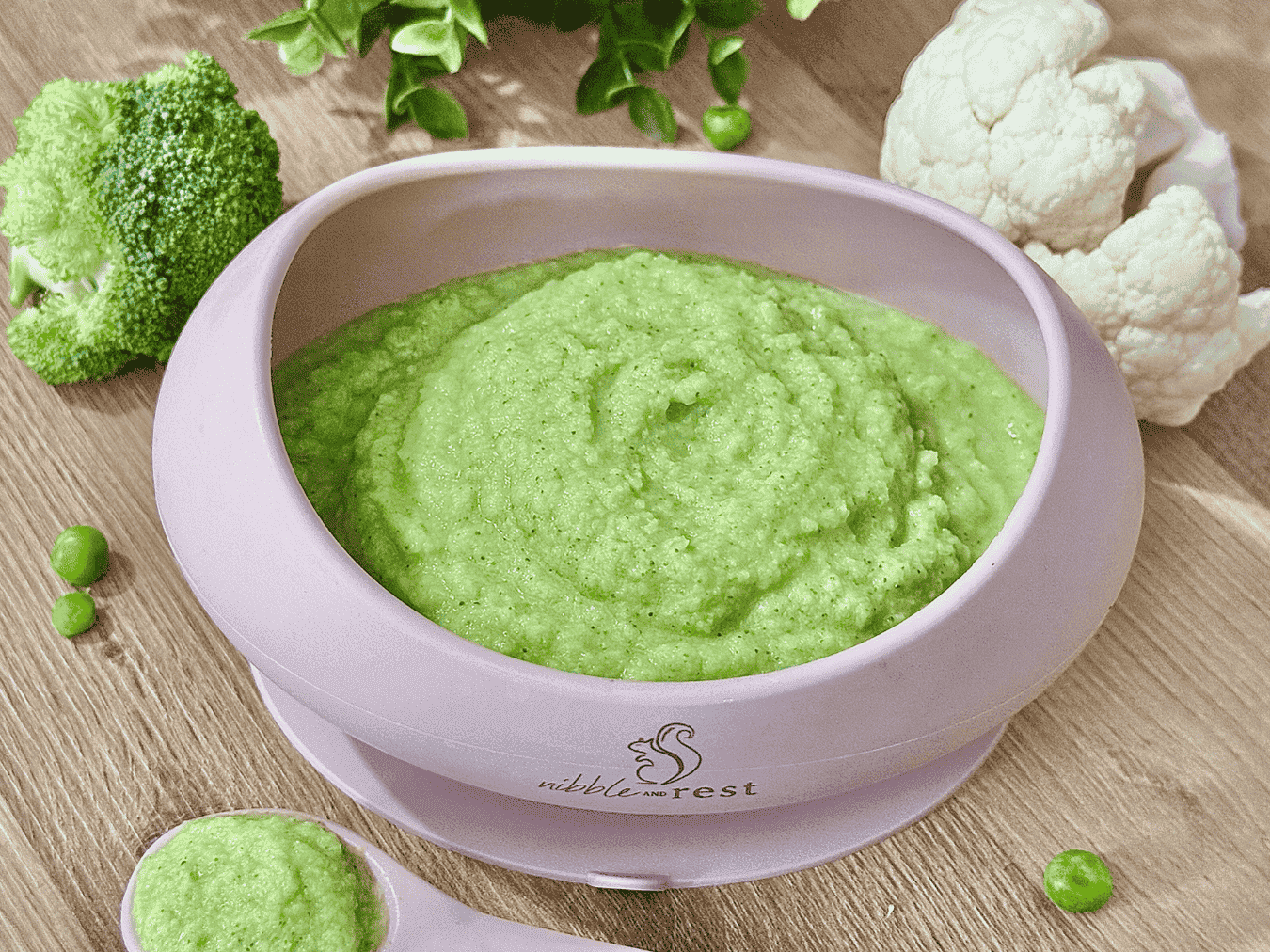
Written by Kenny Ekerin
Fact Checked by Mindsmaking Professionals
16th, August, 2025
This post may contain affiliate links. Please read our disclosure policy.
These veggie puree is a quick, nutrient-rich baby purée made with broccoli, peas, and cauliflower. It's great for babies, perfect for introducing veggies early, freezer-friendly, and easy to prep ahead.
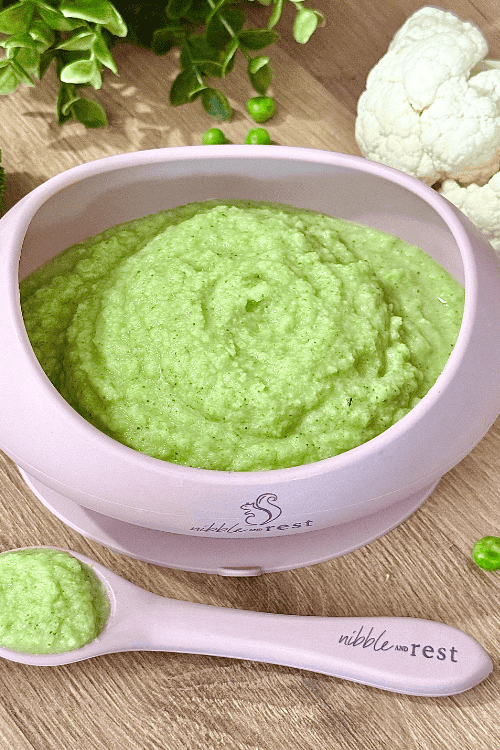
Introducing vegetables to your baby will no longer be a mealtime battle, especially with this smooth, simple veggie baby purée recipe. Made with just four ingredients, including cauliflower, broccoli, and peas, it’s naturally loaded with fiber, vitamins, and minerals that support healthy growth and digestion.
Whether you’re starting your baby's journey with solids or looking for a fuss-free way to get more greens into your little one’s meals, this homemade baby food recipe ticks all the boxes. It’s quick to make, gentle on tiny tummies, and easy to portion out for future meals. Think of it as your go-to green goodness blend!
Why You’d Love This Veggie Baby Puree
- Naturally soft, easy to chew, and great for self-feeding
- Packed with fiber, vitamins, and antioxidants
- Freezer-friendly and easy to prep ahead
- A sneaky way to add veggies to your child’s plate without the struggle
Prep time: 5 minutes
Cook time: 7–8 minutes
Yields: 3–4 portions
How to Make these Easy Veggie Baby Puree
Ingredients
- 6 medium cauliflower florets
- 6 medium broccoli florets
- ½ cup peas (fresh or frozen)
- 1 tablespoon olive oil
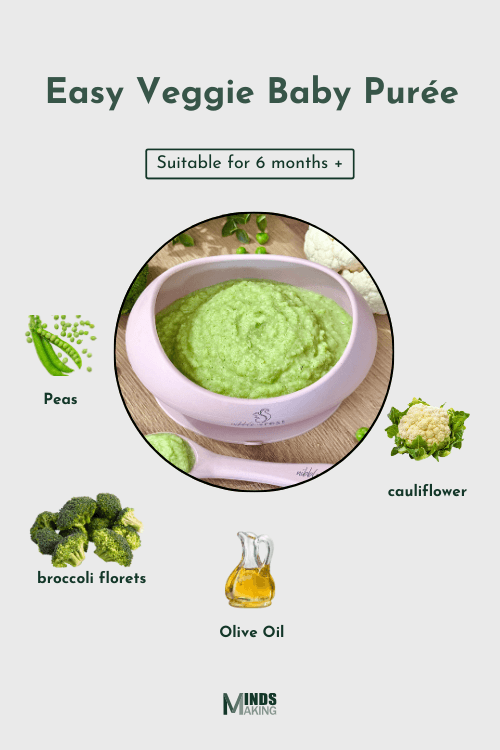
Read This Next

Recipe Ebook
Essential Guide to Starting Solids for Babies 6 Months+ - LBH Top 70 Baby Puree & Porridge Recipes eBook.
Start your baby’s solids journey with confidence using this "70 Baby Purees & Porridges" eBook! Created with care, this digital guide is packed with nutrient-rich recipes for babies 6 months and older, including purees and porridges tailored to each stage of your baby’s development.
Instructions
1. Steam the vegetables:
Place the cauliflower, broccoli, and peas into a steamer basket over boiling water. Steam for 7–8 minutes until very soft. You should be able to pierce them easily with a fork.
2. Cool slightly:
Allow the veggies to cool for a minute or two. This makes them safer to blend and helps preserve nutrients.
3. Blend it up:
Transfer the steamed veggies to a blender or food processor. Add the olive oil and blend until smooth or slightly textured for older babies ready for more variety.
4. Serve or store:
Spoon into a bowl and serve once cooled to a baby-safe temperature. Leftovers can be stored in the fridge or frozen in portions.
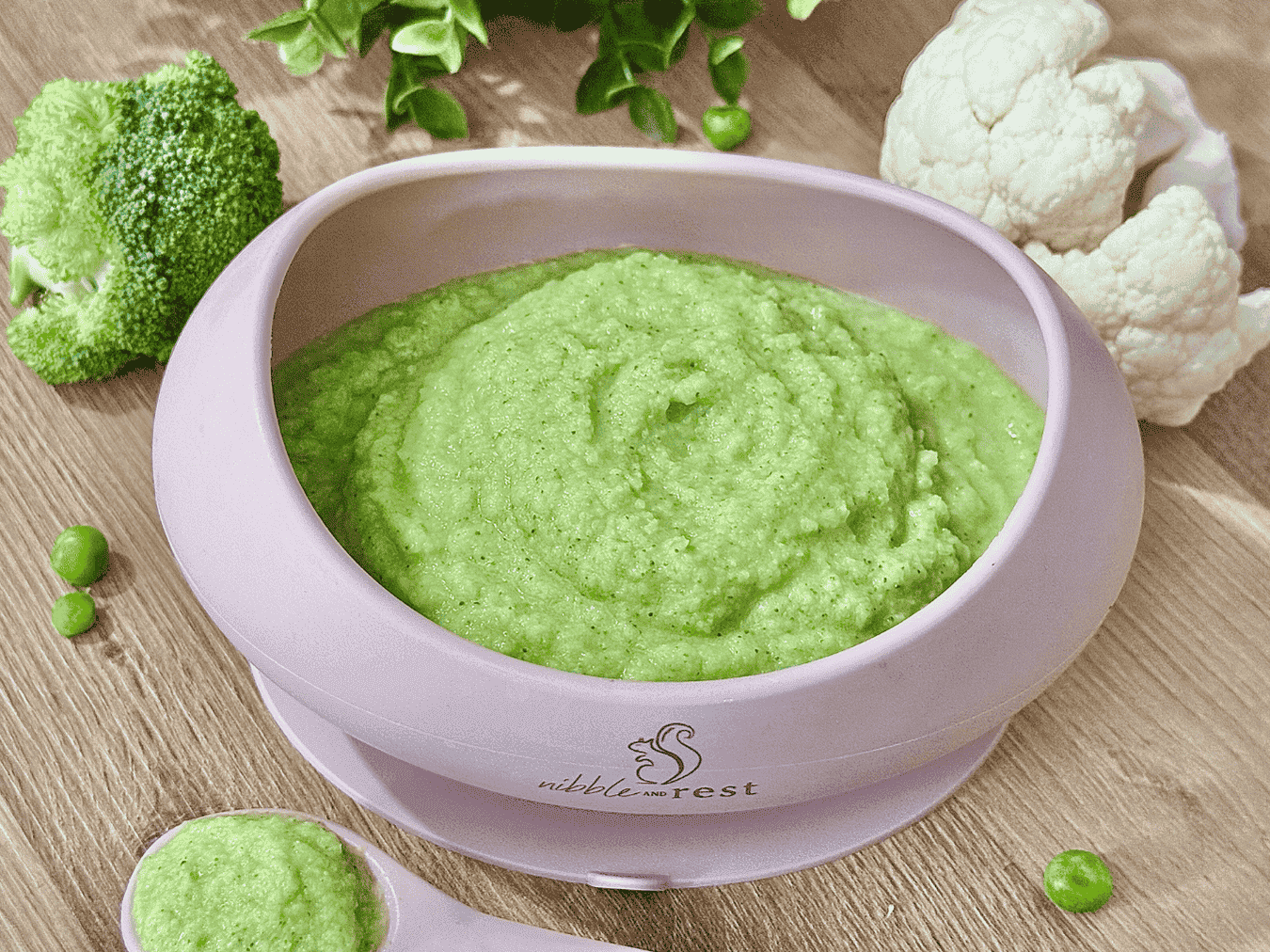
Tips for success
Steam Veggies Until Soft
The texture of baby purée matters enormously, especially in the early months of introducing solids. Steam your cauliflower, broccoli, and peas until they are tender enough to mash with very little pressure from a fork. If they’re not soft enough, you may end up with a gritty or uneven purée that’s difficult for younger babies to swallow or digest.
Use High-Quality Olive Oil
Adding a tablespoon of extra virgin olive oil isn’t just for flavor; it introduces essential monounsaturated fats that support your baby’s brain and nervous system development. It also helps fat-soluble vitamins (like A, D, E, and K) be absorbed more efficiently. Stick to a mild-tasting, cold-pressed oil and use it raw to preserve its nutrients.
Tailor Texture to Baby’s Stage
For babies around 6 months, aim for a smooth, spoon-coatable texture. As your baby becomes more experienced (typically around 8–10 months), you can reduce blending time or pulse to leave a slightly chunkier consistency, which supports oral motor development.
Serving suggestions
Serve Plain
Serve this purée plain as a full meal. The clean, mild flavor makes it ideal for a baby's first experience with greens.
Mix With Other Foods
You can mix this purée with other homemade blends like sweet potato purée, Lentil or chickpea purée and Apple or pear purée.
For Toddlers
Older babies and toddlers can enjoy this purée stirred into cooked quinoa or rice for a simple veggie "risotto", whole wheat pasta as a nutrient-dense sauce and toast strips as a spread (a great finger food option!).
How to store
In the Fridge
Store leftover purée in an airtight baby food-safe container (preferably BPA-free) for up to 3 days. Be sure to cool it completely before sealing to avoid condensation, which can affect texture and safety.
In the Freezer
Freeze in small portions like ice cube trays or silicone baby food pods for easy, grab-and-serve portions. Once frozen solid, pop out the cubes and transfer to a freezer-safe bag. Label with the date and use within 3 months for best quality.
Reheating
Defrost in the fridge overnight or gently reheat using a warm water bath or microwave. Always stir well and check the temperature before serving to your baby to avoid hot spots.
Nutrition
(Per serving, approximate)
- Carbohydrates: 12g
- Protein: 4g
- Fat: 6g
- Saturated Fat: 1g
- Polyunsaturated Fat: 1g
- Monounsaturated Fat: 4g
- Trans Fat: 0g
- Cholesterol: 0mg
- Sodium: 30mg
- Potassium: 370mg
- Fiber: 4g
- Sugar: 3g
- Vitamin A: 550 IU
- Vitamin C: 55 mg
- Calcium: 40 mg
- Iron: 1.2 mg
Note: Nutritional values are estimates and may vary based on ingredient brands and portion sizes.
Frequently Asked Questions
Can I use frozen vegetables instead of fresh?
Yes! Frozen peas, broccoli, and cauliflower are often frozen at peak freshness, which helps retain their nutrients. Just make sure they’re fully steamed and soft before blending. No need to thaw beforehand, just steam a few minutes longer if starting from frozen.
What if my baby doesn’t like the flavor?
Green veggies can have a more bitter taste, especially if your baby is used to sweeter fruits or starchy vegetables. Try mixing the purée with sweeter options like carrots, apples, or sweet potatoes at first, then gradually offer the green version on its own to help build acceptance over time.
Can I skip the olive oil?
You can, if needed, especially if you're just starting solids and your baby is under 6 months and still primarily breastfed or formula-fed. But adding healthy fat supports brain development and helps the purée blend more smoothly. For allergy-friendly or oil-free variations, mashed avocado can be a great substitute.
Is this recipe safe for babies with allergies?
This recipe is free from common allergens like dairy, eggs, nuts, and gluten. However, if your baby has a specific intolerance or you’re following a food introduction plan, always consult your pediatrician before introducing new combinations.
What’s the best way to reheat frozen purée?
For best results, thaw overnight in the fridge, then warm gently over a double boiler or in the microwave. Stir well and ensure it's evenly heated and never refreeze leftovers after reheating.
Can I add spices or herbs?
Yes! Mild herbs like parsley, dill, basil, or oregano can be introduced in tiny amounts. Avoid salt and strong spices as the baby's kidneys are still developing, and their palate is sensitive.
What can I serve this with to make a fuller meal?
Stir into soft grains like millet or couscous, mix with lentil purée for iron and protein, or pair with mashed avocado or plain full-fat yogurt for a fat- and fiber-rich lunch.
Was this article helpful?
How many stars are you giving this article?
Leave a comment
Your email address will not be published.
Comments
More From Recipe
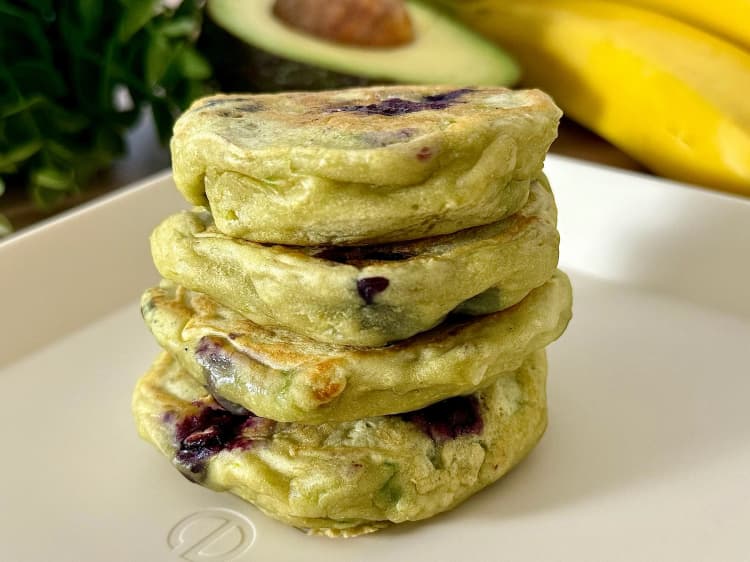
Easy Blueberry Avocado Pancakes
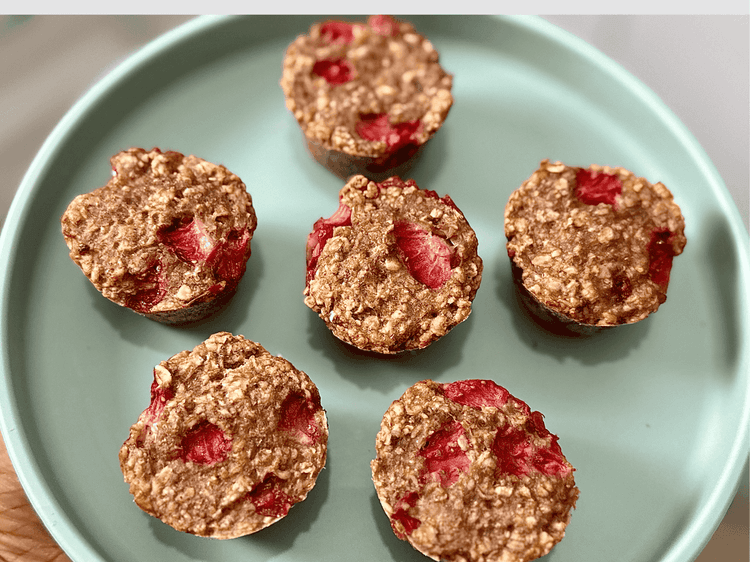
Strawberry Oat Cups
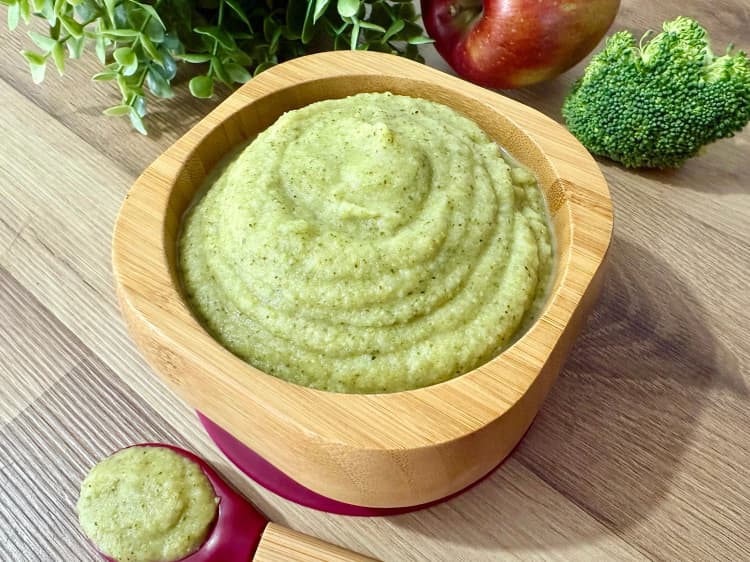
Apple Broccoli Puree
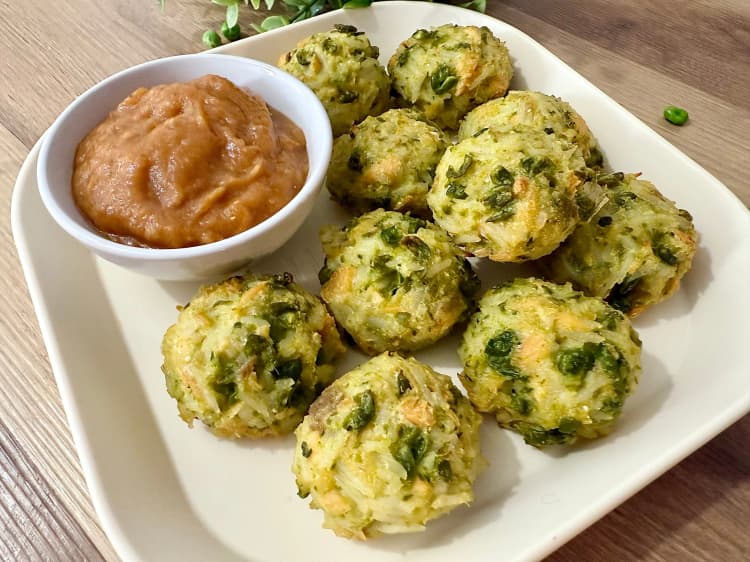
Salmon & Pea Rice Balls
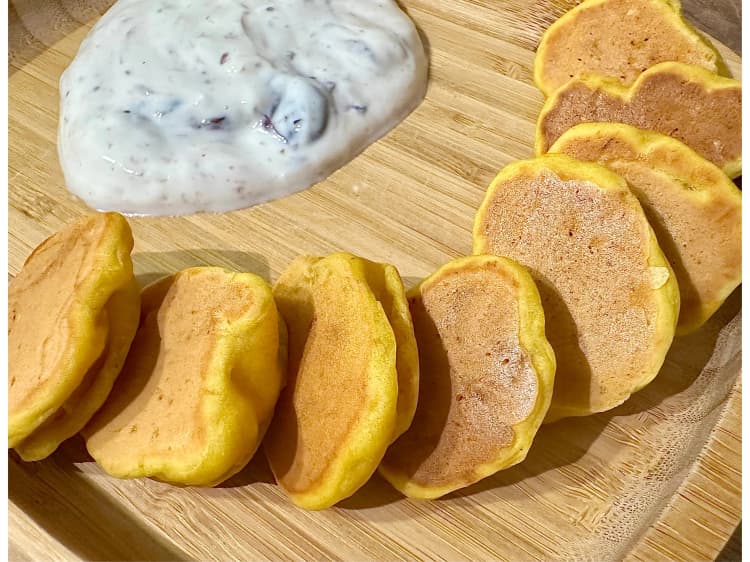
Mini Pumpkin Banana Pancakes

Sweet Potato Frittata
Get new recipes to your inbox
Subscribe to our weekly newsletter and get new recipes sent to your inbox!